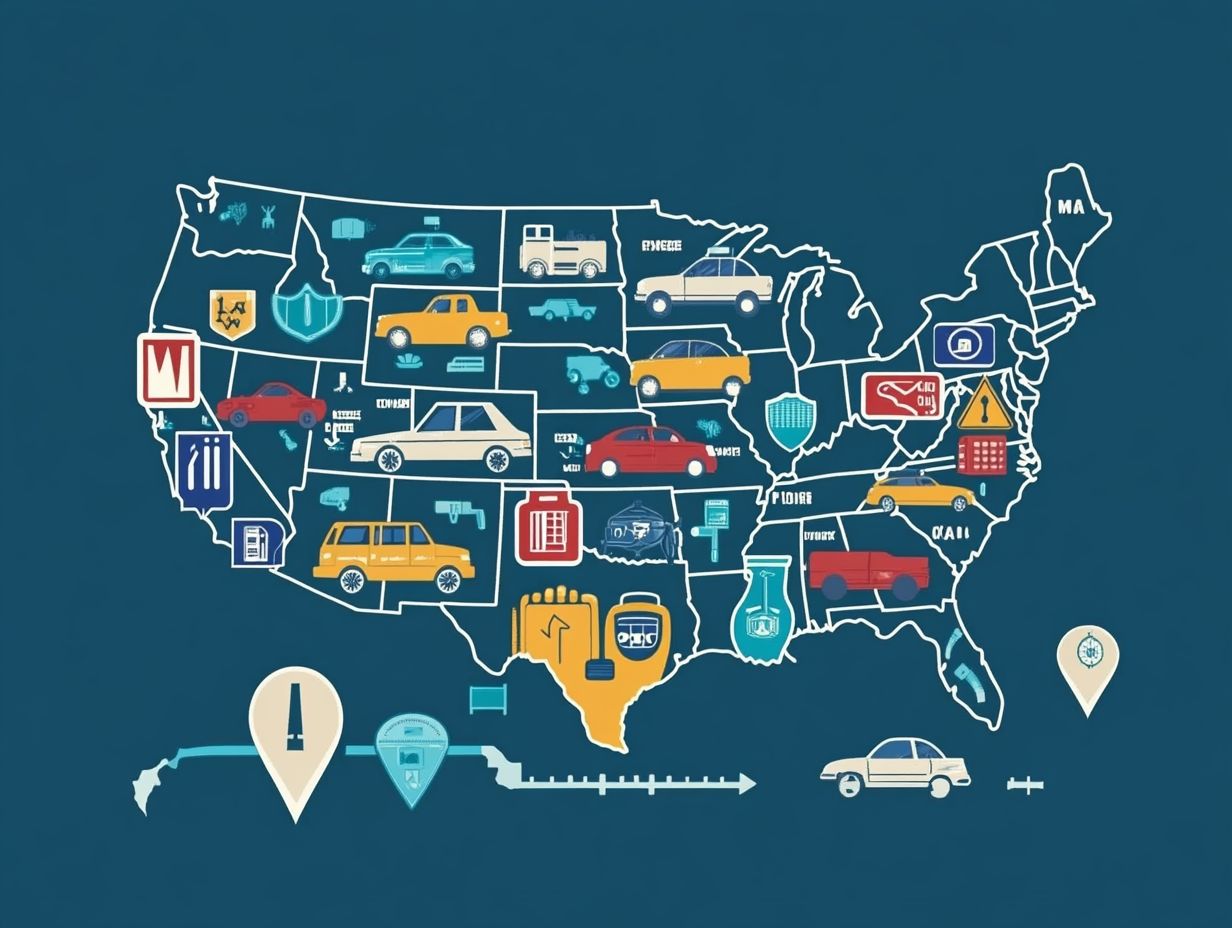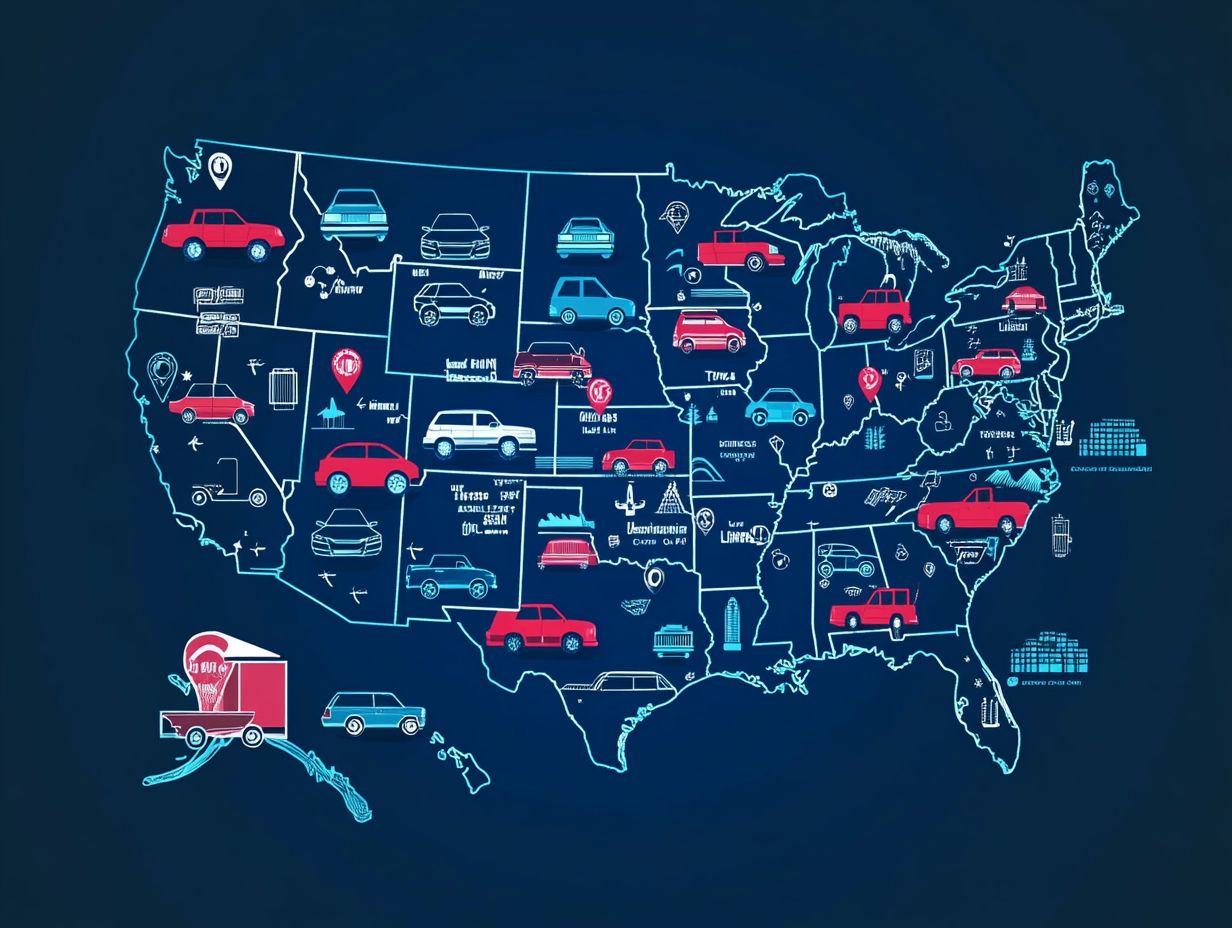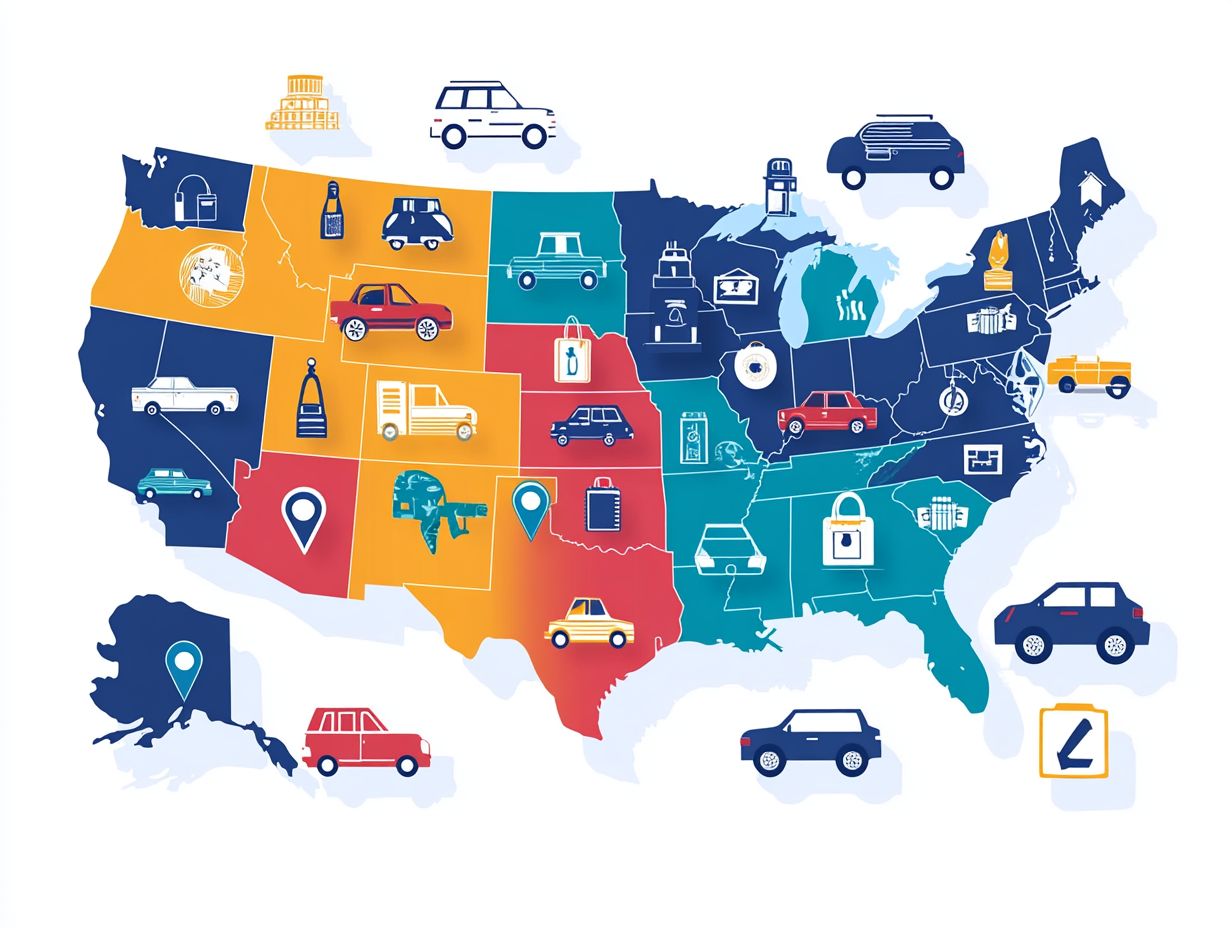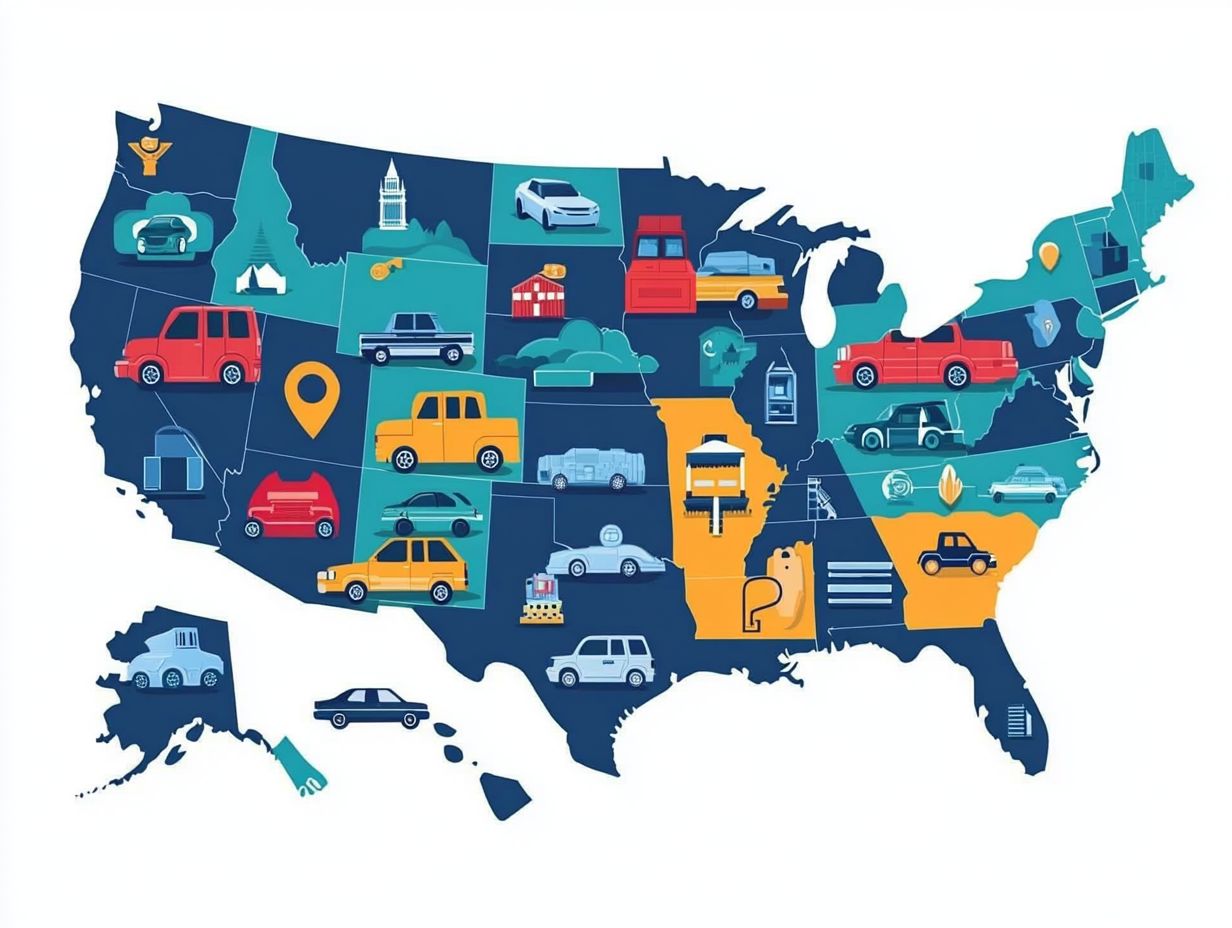Key Differences in Auto Insurance Across States
Navigating the realm of auto insurance can feel like a daunting task, especially given the considerable differences that vary from one state to another. Each state imposes its own unique requirements and regulations, resulting in a diverse landscape of coverage options and costs.
Demographics, driving history, and vehicle type are just a few factors that can significantly impact your insurance rates. This article delves into these critical distinctions, compares various policy options, and provides you with invaluable tips for discovering the best auto insurance tailored to your needs.
Get ready to learn how to make smart choices about your auto coverage!
Contents
- Key Takeaways:
- What is Auto Insurance?
- Differences in Auto Insurance Across States
- Factors that Influence Auto Insurance Rates
- Comparing Auto Insurance Policies
- Tips for Finding the Best Auto Insurance
- Frequently Asked Questions
- What are the key differences in auto insurance across states?
- Do all states have the same minimum coverage requirements for auto insurance?
- How do laws and regulations differ for auto insurance across states?
- Will my auto insurance rates be the same in every state I move to?
- What is the biggest factor that affects auto insurance rates across states?
- Can I use the Same Auto Insurance Policy Across States?
Key Takeaways:

- Auto insurance requirements vary by state, so it’s important to understand the specific coverage and minimum limits required in your state.
- Factors such as your demographics, driving history, and vehicle type can greatly influence your auto insurance rates. Keep these in mind when shopping for coverage.
- When comparing auto insurance policies, be sure to understand the different coverage options, their costs, and any discounts that may be available to you.
What is Auto Insurance?
Auto insurance stands as an essential financial safeguard, offering crucial coverage for vehicles and protecting you and your assets in the event of accidents, theft, or unforeseen mishaps. It encompasses a range of policies, from minimum liability insurance mandated by law in many states to comprehensive coverage options that deliver extensive financial protection.
Understanding the complexities of auto insurance is important for you as a consumer. It influences not only your insurance rates but also the array of coverage options and the claims processes available to you. By grasping these elements, you can ensure that you remain well-protected in a changing world of insurance.
Differences in Auto Insurance Across States
The landscape of auto insurance presents a striking tapestry of differences across states in the USA, shaped by unique insurance requirements, local laws, and regional demographics.
Take Louisiana and Maine, for instance; they reveal a sharp contrast in average annual rates and mandated coverage types. Louisiana ranks among the highest in car insurance costs, largely due to elevated rates of uninsured drivers and population density.
Grasping these variations is crucial for you, enabling informed insurance choices that are finely tuned to your local context.
State-Specific Requirements
State-specific requirements for auto insurance significantly impact how you secure your coverage, with notable differences between regions such as Louisiana and Maine. Each state has its own unique set of insurance laws that dictate the minimum coverage required and the types of policies available to you.
This variability not only influences the costs you face when obtaining a policy but also shapes your preferences and strategies for managing risk. For instance, in states like Texas, where uninsured motorist coverage is particularly emphasized, you ll find yourself navigating a landscape that encourages a more comprehensive approach.
In states with lower requirements, you might be tempted to go for minimum coverage to save on premiums. However, this could leave you vulnerable to greater financial risk if an accident occurs.
Ultimately, these state regulations play a crucial role in shaping the overall insurance market and your decision-making process as a consumer across the country.
Variances in Coverage and Costs

Variances in coverage and costs of car insurance are striking across states, shaped primarily by factors such as average annual rates and the presence of uninsured drivers. For example, in states like Louisiana, insurance rates soar due to a higher incidence of claims related to accidents and theft. Other states may present more budget-friendly car insurance options.
By understanding these discrepancies, you can select the auto insurance premium that aligns with your needs and financial circumstances.
Take Michigan, for instance. It has a system where each driver pays for their own injuries, resulting in significantly higher rates. This is largely due to the burdens of hospital fees and medical coverage mandates.
On the other hand, states like Maine and Vermont often have lower average rates because of their commendable safe driving records and lower population densities.
These variations reflect not just differing legal frameworks, but also the distinct driving habits of each region. Areas facing harsh weather conditions or heavy traffic typically experience increased rates.
By comparing these factors, you’ll be empowered to make smart choices and navigate the landscape of auto insurance options with confidence.
Factors that Influence Auto Insurance Rates
Several factors play a crucial role in determining auto insurance rates, directly influencing how providers calculate your premiums. Key elements include your driving habits, the type of vehicle you own, and your personal history think driving record and demographics.
It’s also important to consider external factors like inflation, which can affect insurance pricing and lead to varying rate increases across different individuals and regions. Understanding these dynamics is essential for you to make informed decisions about your insurance policies and identify potential discounts.
Demographics, Driving History, and Vehicle Type
Demographics, driving history, and vehicle type are essential factors that shape your auto insurance rates, providing insurers with a clear picture of the potential risk you present as a driver. For example, if you’re a younger, less experienced driver, you may find yourself facing higher premiums due to the increased risk of accidents.
Conversely, if you have a solid driving record, you could benefit from discounts on your insurance.
The type of vehicle you own be it a high-performance sports car or a reliable family sedan also plays a significant role in determining your insurance pricing, as insurers evaluate the likelihood of claims based on the specific traits of your vehicle.
Your geographical location is another crucial element influencing your auto insurance rates. If you live in an area with higher crime rates or frequent accidents, you might notice elevated premiums that reflect the increased chances of claims. The frequency of insurance claims in various regions helps shape the overall risk assessment as well.
Insurers are diligent in gathering data to uncover patterns related to driving behavior, vehicle safety ratings, and even the statistical likelihood of your car being stolen.
Understanding these factors helps insurers set fair rates that balance risk and affordability for policyholders like you.
Comparing Auto Insurance Policies
Comparing auto insurance policies is crucial for you as a driver seeking the best coverage options tailored to your specific needs. This process gives you the power to evaluate different insurance quotes and grasp the various policy types available.
Understanding what to prioritize be it liability coverage or comprehensive plans ensures you make informed decisions when selecting your insurance policy. A meticulous comparison can lead to substantial savings and provide you with enhanced protection against potential risks.
Understanding Policy Options

Understanding your policy options is essential when navigating the intricate world of auto insurance. The different types of coverage can profoundly impact both your protection and costs.
Among these options, full coverage shines with its all-encompassing nature. It includes liability coverage, which takes care of damages you might cause to others, collision coverage for your own vehicle s repairs post-accident, and comprehensive coverage that shields you from non-collision incidents like theft or natural disasters.
On the flip side, minimum liability coverage might catch your eye if you’re working with a tight budget. While it meets state requirements, it falls short when it comes to protecting your own vehicle.
You also have the option to enhance your coverage with various endorsements (additional coverage options), such as roadside assistance or uninsured motorist protection. This allows you to customize your policy to fit your unique needs and the specific risks associated with your driving habits.
Tips for Finding the Best Auto Insurance
Ready to find the best auto insurance? Let s dive in! A smart plan involves thorough research and careful comparison to match your budget and what you need.
Leveraging online insurance tools can significantly simplify this process. These tools grant you access to an extensive array of car insurance quotes and potential discounts.
Engaging in effective consumer outreach gives you the power to gather valuable insights. This enables you to make informed insurance decisions that are uniquely tailored to your circumstances.
Researching and Comparing Quotes
Researching and comparing car insurance quotes is essential if you’re looking to secure the best deals in the insurance market. You can evaluate various offers from different insurance providers.
By utilizing online platforms specifically designed for insurance comparisons, you can quickly gather relevant information on premiums, coverage limits, and customer reviews. These digital tools are user-friendly and often filter options based on your needs and preferences, making the task of finding the right policy much less daunting.
Know the average rates for your vehicle type and driving record. This knowledge boosts your negotiation power! In this ever-evolving landscape, taking the time to explore multiple quotes ensures you make educated choices that align with your financial goals while securing the necessary protection on the road.
Frequently Asked Questions
What are the key differences in auto insurance across states?

The key differences in auto insurance across states include varying minimum coverage requirements, different laws and regulations, and differing premium rates, all of which can be influenced by the impact of state regulations on auto insurance.
Do all states have the same minimum coverage requirements for auto insurance?
No, each state has its own set of minimum coverage requirements for auto insurance. These can include liability coverage, personal injury protection, and uninsured/underinsured motorist coverage.
How do laws and regulations differ for auto insurance across states?
Laws and regulations regarding auto insurance can vary greatly across states. Some states have no-fault insurance laws, while others have traditional fault-based systems. Some states have different laws about how insurance companies set rates and manage claims.
Will my auto insurance rates be the same in every state I move to?
No, auto insurance rates can vary significantly from state to state. Factors such as population density, crime rates, and weather can all affect insurance rates in a particular state.
What is the biggest factor that affects auto insurance rates across states?
The biggest factor that affects auto insurance rates across states is the number of accidents and claims in that state. States with higher rates of accidents and claims tend to have higher insurance rates.
Start comparing quotes today to secure your ideal auto insurance policy!
Can I use the Same Auto Insurance Policy Across States?
Most insurance companies allow you to use the same auto insurance policy across states as long as you inform them about your move.
Planning to move? Be aware that your rates might change based on your new location and local laws.



